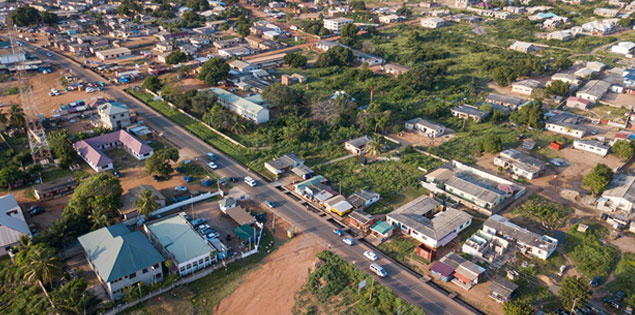Emerging markets and developing economies (EMDEs) are at the centre of a global sustainable development challenge. These countries face slow growth, rising debt, and climate risks. In 2024 alone, they were projected to spend US $400 billion on external debt service, limiting resources for long-term priorities and the SDGs, with a financing gap estimated at nearly US $4 trillion annually.
Necessity of community-led investment models
Top-down investments have struggled to deliver lasting impact, as conventional development funding remains centralised and often disconnected. Community-based financing shifts control to the local level, unlike conventional funding. It relies on collective decision-making, and partnerships with civil society and municipalities. Evidence shows that community engagement enhances ownership, accountability and innovation, and better aligned with local needs unlocking innovative solutions that conventional funding miss.
Gaps holding back local financing
While community-led financing is critical to advancing SDG action in EMDEs, it is constrained by persistent challenges. Most financial products target large institutions, making it inaccessible for small-scale or community ventures. Less than 2% of global humanitarian funding goes directly to local organisations. Investors often see grassroots initiatives as high-risk, due to a lack of formal collateral, and irregular credit histories. This is reinforced by the underrepresentation of women, youth, and informal workers, in investment decisions, perpetuating social and economic inequalities.
The landscape is further complicated by a fragmented stakeholder ecosystem, where poor coordination among donors, governments, and civil society leads to inefficient funding flows and missed opportunities for scaling successful models. Local groups often lack the capacity to design proposals or track outcomes, limiting their ability to attract investment. Restrictive policy and regulatory frameworks in many countries further hinder community ownership or participatory investment, creating substantial roadblocks for local innovation.
Unlocking community-driven finance
Central to these models is the principle of co-ownership and co-investment, whereby local residents collectively design, finance, and implement projects in sectors ranging from renewable energy to water supply and social infrastructure. This fosters sustainability and profound local buy-in. Additionally, inclusive governance, with decision-making that explicitly involves women, youth, and marginalised community members, ensures investments align with the local needs and priorities.
Blended and flexible finance models pool grants, philanthropy, microfinance, and private capital to overcome financial exclusion, while digital tools like mobile banking, crowdfunding, and blockchain cut costs, boost transparency, and democratise access. Together, these approaches can unlock new possibilities for community-driven SDG progress in emerging economies.
Case studies
Several innovative community-led investment models demonstrate how these opportunities can be translated into practical and scalable solutions.
- Thailand’s Community Development Funds: Thailand’s Community Development Fund (CDF), initiated in 1992 and later integrated into the Community Organizations Development Institute (CODI), is a transformative model for urban poverty alleviation. It empowers low-income communities to lead their own development through savings groups, collective loans, and participatory planning. Baan Mankong Program, launched in 2003 under the CDF, provides secure land tenure and affordable housing for slum dwellers via community-managed cooperatives. Between 2004 and 2014, it secured tenure for over 96,000 households, significantly reducing eviction fears and improving housing quality.
- Brazil’s Banco Palmas Community: Founded in 1998 in Fortaleza, Banco Palmas is a community development bank addressing economic challenges in marginalised neighbourhoods of Fortaleza, Brazil. It offers banking, microcredit, and a local digital currency to boost local transactions and economic activity, while fostering social cohesion and community empowerment. Banco Palmas is currently a part of a network of over 100 community banks across Brazil, serving vulnerable groups, ranging from indigenous communities and smallholder farmers to favela residents, promoting local economic resilience and inclusion.
- Community renewable energy cooperatives in South Africa and Kenya: Local energy trusts and cooperatives co-own solar and wind installations, benefitting directly from clean power and sharing profits that are reinvested in education and health.
This helped improve energy access in underserved areas, powering essential services, create jobs, provide technical training and strengthen social cohesion, offering a scalable model for inclusive clean energy solutions that boost community resilience and livelihoods.
Scaling impact via strategic progress
Accelerating SDG delivery through community-driven finance requires blended, de-risked funding, inclusive participation, and investments in digital tools and capacity building. Community-driven monitoring enhances accountability, while policy reforms legitimise cooperatives and local investment. Scaling relies on piloting, replication, and multi-stakeholder partnerships. Community-led investments bridge last-mile financing gaps and harness local knowledge for sustainable, inclusive progress. With G20 and T20 support, prioritising these approaches will ensure no one gets left behind.
References
- https://www.brookings.edu/articles/from-aid-driven-to-investment-driven-models-of-sustainable-development/
- https://www.gem.wiki/Community-Owned_Solar_Initiatives_in_South_Africa
- https://www.centerforfinancialinclusion.org/banco-palmas-a-model-for-socially-embedded-financial-services/
- https://news.trust.org/item/20210715224755-kmi5r.com
- https://unhabitat.org/community-development-fund-in-thailand.com
- https://en.codi.or.th/community-finance-2/national-community-fund.com
- https://blog-pfm.imf.org/en/pfmblog/2025/04/emerging-markets-face-a-perfect-storm

